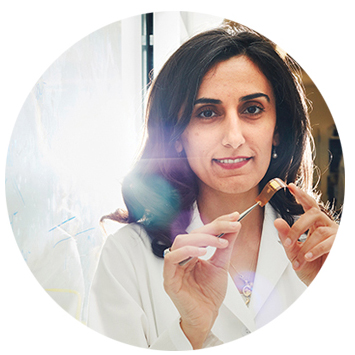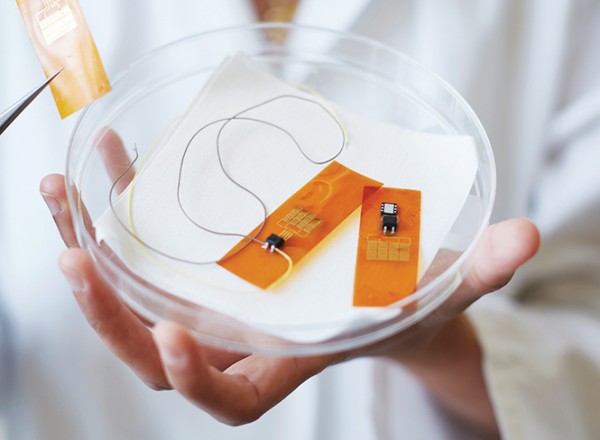
` Canan Dagdeviren, 30
A master of flexible sensors and batteries sees opportunities for a new class of medical devices.
What do you do when your mother complains that she can’t tell if her skin cream is working? If you’re the Turkish materials scientist Canan Dagdeviren, you build a device that can measure changes in skin quality too slight to be detected by human touch. While working with dermatologists to develop the instrument, however, Dagdeviren found that it could be put to a more significant use: screening for skin cancer, either to catch it earlier or to help patients avoid unnecessary biopsies.

One early indicator of cancer is a patch of skin slightly thicker than the skin around it. It turns out that Dagdeviren’s device, a tiny sensor and battery embedded in a translucent patch of stretchy rubber, can detect variations in skin density more accurately than a doctor’s fingers. It can be pulled over skin anywhere on the body to take such measurements.
As a PhD student at the University of Illinois, Urbana-Champaign, Dagdeviren also developed a device that can be permanently implanted inside the body and harvest energy from the movements of organs. It can send that power directly to devices like pacemakers or be used to charge a battery. Today, pacemaker batteries are bulky and need to be surgically replaced every five to eight years. Dagdeviren’s self-powering device, which has been tested in animals, could make life with a pacemaker that much easier.

While the flexible energy harvester works by a different mechanism than her skin sensor, both projects fit with the overall goal Dagdeviren is pursuing as a postdoctoral researcher at Harvard and MIT: creating a new class of biomedical electronics that are far less rigid and clunky than what we use today.
—Julia Sklar
Watch this Innovator at EmTech 2015
Meet the Innovators Under 35
